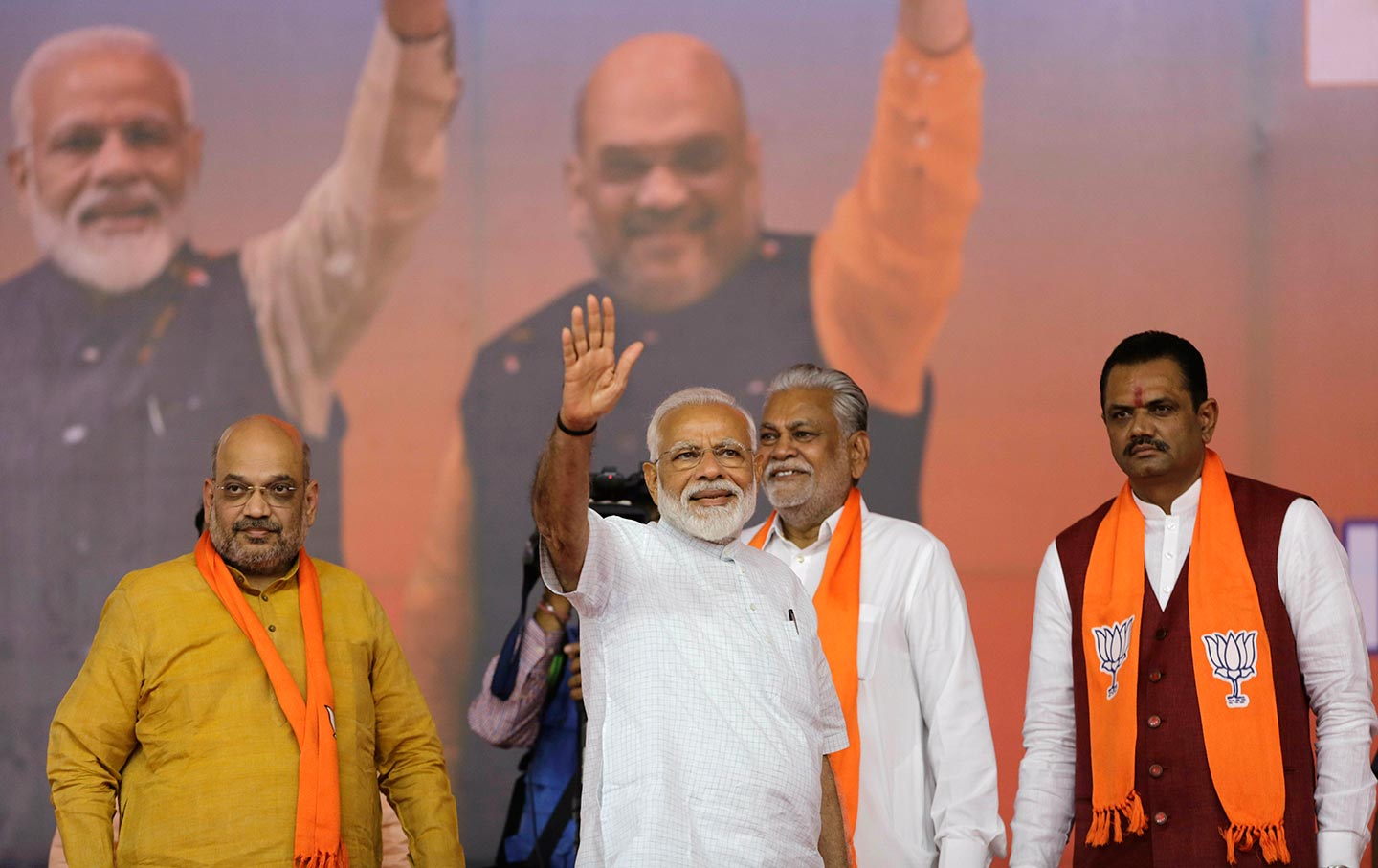The rise of Modi
and the Hindu far right
By Arundhati Roy

January 02, 2020 "Information
Clearing House" -
While
protest reverberates on the streets of Chile, Catalonia,
Bolivia, Britain, France, Iraq, Lebanon, and Hong Kong,
and a new generation rages against what has been done to
their planet, I hope you will forgive me for speaking
about a place where the street has been taken over by
something quite different. There was a time when dissent
was India’s best export. But now, even as protest swells
in the West, our great anti-capitalist and
anti-imperialist movements for social and environmental
justice—the marches against big dams, against the
privatization and plunder of our rivers and forests,
against mass displacement and the alienation of
indigenous peoples’ homelands—have largely fallen
silent. On September 17 this year, Prime Minister
Narendra Modi gifted himself the filled-to-the-brim
reservoir of the Sardar Sarovar Dam on the Narmada River
for his 69th birthday, while thousands of villagers who
had fought that dam for more than 30 years watched their
homes disappear under the rising water. It was a moment
of great symbolism.
In India today, a shadow world is creeping up on us
in broad daylight. It is becoming more and more
difficult to communicate the scale of the crisis even to
ourselves. An accurate description runs the risk of
sounding like hyperbole. And so, for the sake of
credibility and good manners, we groom the creature that
has sunk its teeth into us—we comb out its hair and wipe
its dripping jaw to make it more personable in polite
company. India isn’t by any means the worst, or most
dangerous, place in the world—at least not yet—but
perhaps the divergence between what it could have been
and what it has become makes it the most tragic.
Right
now, 7 million people in the valley of Kashmir,
overwhelming numbers of whom do not wish to be citizens
of India and have fought for decades for their right to
self-determination, are locked down under a digital
siege and the densest military occupation in the world.
Simultaneously, in the eastern state of Assam, almost
two million people who long to belong to India
have found their names missing from the National
Register of Citizens (NRC), and risk being declared
stateless. The Indian government has announced its
intention of
extending the NRC to the rest of India.
Legislation is on its way. This could lead to the
manufacture of statelessness on a scale previously
unknown.
The rich
in Western countries are making their own arrangements
for the coming climate calamity. They’re building
bunkers and stocking reservoirs of food and clean water.
In poor countries—India, despite being the fifth-largest
economy in the world, is, shamefully, still a poor and
hungry country—different kinds of arrangements are being
made. The Indian government’s August 5, 2019,
annexation of Kashmir
has as much to do with the Indian government’s urgency
to secure access to the five rivers that run through the
state of Jammu and Kashmir as it does with anything
else. And the NRC, which will create a system of tiered
citizenship in which some citizens have more rights than
others, is also a preparation for a time when resources
become scarce. Citizenship, as Hannah Arendt famously
said, is the right to have rights.
The dismantling of the idea of liberty, fraternity,
and equality will be—in fact already is—the first
casualty of the climate crisis. I’m going to try to
explain in some detail how this is happening. And how,
in India, the modern management system that emerged to
handle this very modern crisis has its roots in an
odious, dangerous filament of our history.
The violence of inclusion and the violence of
exclusion are precursors of a convulsion that could
alter the foundations of India—and rearrange its meaning
and its place in the world. Our Constitution calls India
a “socialist secular democratic republic.” We use the
word “secular” in a slightly different sense from the
rest of the world—for us, it’s code for a society in
which all religions have equal standing in the eyes of
the law. In practice, India has been neither secular nor
socialist. It has always functioned as an upper-caste
Hindu state. But the conceit of secularism, hypocritical
though it may be, is the only shard of coherence that
makes India possible. That hypocrisy was the
best thing we had. Without it, India will end.
In his
May 2019 victory speech, after his party won a second
term, Modi boasted that no politicians from any
political party had
dared to campaign on “secularism.”
The tank of secularism, Modi seemed to say, was now
empty. So, it’s official. India is running on empty. And
we are learning, too late, to cherish hypocrisy. Because
with it comes a vestige, a pretense at least, of
remembered decency.
India is not really a country. It is a continent.
More complex and diverse, with more languages—780 at
last count, excluding dialects—more indigenous tribes
and religions, and perhaps more communities that
consider themselves separate nations than all of Europe.
Imagine this vast ocean, this fragile, fractious, social
ecosystem, suddenly being commandeered by a Hindu
supremacist organization that believes in a doctrine of
One Nation, One Language, One Religion, One
Constitution.